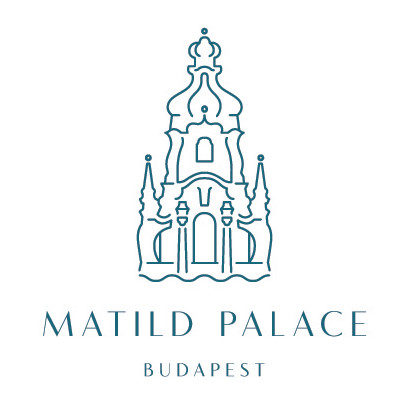Insider’s Guide: Top 10 Highlights at Museum of Fine Arts in Budapest
- 14 Apr 2025 6:00 AM

Whether you're a seasoned art lover or just dipping your toes into the rich cultural waters of Budapest, in this quick-read guide for expats interested in exploring the cultural treasures in the capital these 10 highlights are well worth checking-out.
1. Raphael’s “Virgin and Child with Young St. John the Baptist”
This small yet exquisite painting is a standout in the museum’s Italian Renaissance collection. Attributed to Raphael, one of the High Renaissance's most celebrated painters, the piece exudes a sense of calm and divine serenity.
The composition balances elegance with naturalistic warmth, portraying Mary, Jesus, and the young John the Baptist with tender expressions and delicate gestures.
For art historians and casual visitors alike, this work offers a rare encounter with the master’s early brilliance—without having to hop on a flight to Florence or Rome.
2. The Egyptian Collection
Few expect to find a top-tier Egyptian collection in Central Europe, but Budapest delivers. The museum’s permanent exhibition on ancient Egypt features beautifully preserved mummies, vividly painted sarcophagi, amulets, hieroglyphic tablets, and tools from daily life and the afterlife.
Interactive displays and 3D models make it especially engaging for children and families, while scholars can appreciate the collection’s depth, which rivals those found in major Western museums. It’s a fascinating dive into 4,000 years of ancient history, myth, ritual and amazing Egyptian Antiquities.
3. El Greco’s “The Annunciation”
El Greco, with his elongated figures and ethereal light, created some of the most otherworldly religious art of the Spanish Renaissance. “The Annunciation”, held in Budapest’s collection, is a striking depiction of the moment the angel Gabriel tells Mary she will bear the son of God.
The intensity of color, twisting drapery, and spiritual energy all reflect El Greco’s unique style. This piece is not just a visual highlight but also an emotional one - full of awe and divine drama.
4. The Horse and Rider of Leonardo da Vinci

Though Leonardo da Vinci’s original horse sculpture was never completed, the museum houses a stunning bronze reconstruction based on his surviving sketches. It gives viewers a tangible sense of Leonardo’s ambition as both an artist and engineer.
Standing before this life-sized sculpture, you can almost feel the Renaissance spirit of innovation, blending science and art. It’s a great example of how the museum brings lost history back to life - and a great photo opportunity too plus you can buy an special keep-sake.
5. Dürer and the German Masters

The museum’s prints and drawings collection includes exceptional works by Albrecht Dürer, the German master of woodcuts and engravings. His incredibly detailed works - like “Melancholia I” or “The Four Horsemen of the Apocalypse” - are technical marvels and deep philosophical statements at the same time.
Alongside Dürer, visitors can view works by other Northern Renaissance artists such as Lucas Cranach the Elder, whose vivid portraits and mythological scenes reflect a different flavor of Reformation-era art.

This wing of the museum houses artifacts from ancient Greece, Rome, and Etruria, including statues, coins, ceramics, and jewelry. The serene marble sculptures and painted amphorae tell stories of gods, heroes, and everyday life from millennia ago.
Especially compelling is the Roman portraiture section, where visitors can admire realistic busts that seem to stare back at you through time. It’s a peaceful, intellectually rich space, ideal for reflection and appreciation of Europe’s classical roots.
7. Spanish Gallery Featuring Goya and Velázquez
The Spanish collection is widely considered one of the best outside of Spain. Here you’ll find dramatic, emotionally charged works by Francisco de Goya, who bridged the Old Masters and modern sensibilities with haunting portraits and social commentary.
This gallery also includes paintings by Diego Velázquez, known for his lifelike rendering and royal commissions, as well as religious works by Murillo and Ribera. The depth and drama of this collection are simply breathtaking.
8. The Rembrandt Room
Few artists capture the human soul as powerfully as Rembrandt van Rijn. The museum’s masterpiece, “Old Man in a Red Cap,” shows an elderly man bathed in golden light, his expression a blend of wisdom and fatigue. The textured brushwork and masterful use of shadow make this a standout piece.
Surrounded by other Dutch Golden Age works, this room immerses visitors in 17th-century Holland’s mastery of light, realism, and psychological depth.
9. The Renaissance Hall

One of the museum’s most atmospheric spaces, the Renaissance Hall was restored to its former glory during recent renovations. High ceilings, arched windows, and soft natural light provide a majestic setting for large altarpieces and frescoes by artists such as Veronese and Tintoretto.
The room itself feels like a cathedral of art—visiting it is a visual and spiritual experience. It’s the perfect place to sit quietly and soak in the grandeur of the High Renaissance.
10. Temporary Exhibitions + Special Events
The museum continually refreshes its offerings with blockbuster temporary exhibitions, often featuring world-renowned artists like Monet, Picasso, and Van Gogh. These exhibitions are typically well-curated and accompanied by English descriptions, making them highly accessible for expats.
The museum also offers guided tours, art workshops, lectures, and even after-hours events that give visitors a deeper appreciation of specific themes or eras. It’s well worth signing up for the museum’s newsletter to stay informed.
Top Tips for Your Visit
-
Audio guides are available via the museum’s free app (bring headphones!).
-
Enjoy a relaxed coffee or snack in the elegant onsite café.
-
The museum shop offers great gifts, prints, and books (many in English).
-
Visit during weekday mornings to avoid weekend crowds.
-
Family-friendly features include creative activity sheets and child-focused labels.
Overall, for expats in Budapest the Museum of Fine Arts is more than just a rainy-day option - it’s a special cultural haven, a source of inspiration, and a way to experience what Hungary has to offer, along with the broader heritage of Europe and beyond.
Whether you return again (and again) or just savor a single day among these masterpieces, it’s an experience you won't regret if you know what you're looking for using your pick of the highlights showcased above and more there to suit your taste.
More:
Museum of Fine Arts in Budapest
1146 Budapest, Dózsa György út 41. / Heroes' square



























LATEST NEWS IN finance